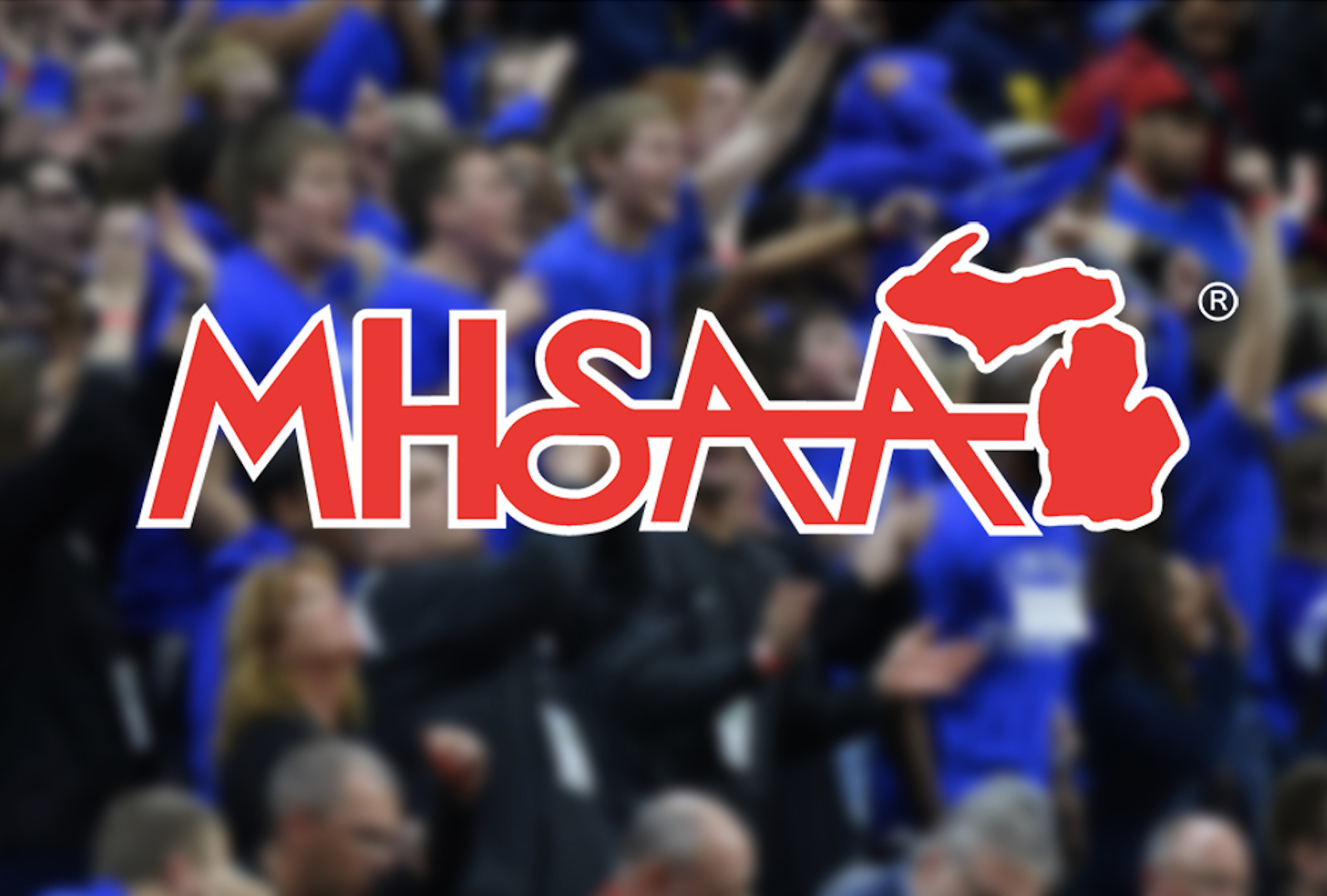
This Week in High School Sports: 1/25/23
By
Jon Ross
MHSAA Director of Broadcast Properties
January 25, 2023
This week's edition announces a pair of milestone coaching victories, awards Game Balls to standouts in wrestling and basketball, explains the various responsibilities for competitive cheer judges and discusses how Michigan high school sports participation ranks nationwide.
 The 5-minute program each week includes feature stories from MHSAA.com or network affiliates, along with "Be the Referee," a 60-second look at the fine art of officiating.
The 5-minute program each week includes feature stories from MHSAA.com or network affiliates, along with "Be the Referee," a 60-second look at the fine art of officiating.
"This Week in High School Sports" is powered by MI Student Aid, a part of the Office of Postsecondary Financial Planning located within the Michigan Department of Treasury.
Listen to this week's show by Clicking Here.
Past editions
Jan. 18: Brad Bush joins MHSAA, Al DeMott sets coaching record - Listen
Jan. 4: Winter Championships, Officials Recruitment - Listen
Nov. 23: 8-Player Football Finals, Lower Peninsula Girls Swimming & Diving Finals, Volleyball Finals - Listen
Nov. 18: Concussion Myths, Navea Gauthier's record-setting Shelby volleyball season - Listen
Nov. 11: Lower Peninsula Cross Country, Boys Soccer Finals review - Listen
Nov. 2: Football Playoffs Week 1 notables, Fall 2022 championships and broadcasts - Listen
Oct. 26: Football Playoffs pairings selection, Upper Peninsula Cross Country Finals - Listen
Oct. 19: Sunday Selection Show, Lower Peninsula Girls Golf & Boys Tennis Finals - Listen
Oct. 12: 25th Women In Sports Leadership Conference highlights - Listen
Oct. 5: Upper Peninsula Girls Tennis Finals champions, Rockford's Anna Tracey - Listen
Sept. 28: MHSAA Sportsmanship Summits return, Owosso's Macy Irelan - Listen
Sept. 21: MHSAA/Farm Bureau Insurance Scholar-Athlete Awards, Marquette's Maddy Stern - Listen
Sept. 14: MHSAA record books, Detroit Renaissance's Kaila Jackson - Listen
Sept. 7: Sports Participation rebounding, Paw Paw's Paige Miller - Listen
Aug. 31: Michigan Power Ratings and soccer seeding, Fenton's Gracie Olsen - Listen
Aug. 24: Redesigned MHSAA.com, key dates and how to watch football in 2022 - Listen

The Inherent Risk of Sport Specialization
April 30, 2018
 By Bob Gardner
By Bob Gardner
Executive Director of the National Federation of State High School Associations
One of the responsibilities that parents take most seriously is protecting their children from injury, whether it is buckling seat belts in a car or wearing a helmet while riding a bike. And when their kids become teenagers and want to participate in sports or other activities, parents do everything they can to keep their sons and daughters from getting hurt.
But not all injuries are caused by a twist, fall, collision or accident. Many are caused when young athletes repeat the same athletic activity so often that muscles, ligaments, tendons and bones don’t have time to recover—especially among middle school and high school students. These injuries can end promising careers, cost families tens of thousands of dollars, squash dreams and literally change lives.
Examples include elbow and arm injuries to teenagers who play baseball or softball all year long, shoulder injuries to year-round swimmers, wrist and elbow injuries to gymnasts, and stress fractures to soccer players.
The culprit, most often, is what’s commonly known as “sport specialization,” the process of playing the same sport all year long with the goal of either gaining a competitive edge or earning a college scholarship. It involves intense, year-round training in a single sport.
Research shows that sports specialization is putting teenage athletes at risk. According to a study commissioned by the National Federation of State High School Associations (NFHS) and conducted by researchers from the University of Wisconsin, high school athletes who specialize in a single sport are 70 percent more likely to suffer an injury during their playing season than those who play multiple sports.
The American Academy of Orthopedic Surgeons says much the same. It reports that “overuse injuries” (injuries caused when an athletic activity is repeated so often that parts of the body do not have enough time to heal) are responsible for nearly half of all sports injuries to middle school and high school students.
There is a solution. Young athletes should be encouraged to play multiple sports.
When student-athletes cross-train, they work different muscle groups and joints which, in fact, results in better overall conditioning. They also develop a new set of athletic skills like hand-eye coordination, balance, endurance, explosion and agility that are transferable to their primary sport. It’s no coincidence that 30 of the 32 first-round picks in the 2017 National Football League draft played multiple sports in high school.
Parents can play a key role in preventing these overuse injuries by encouraging their kids to play multiple sports rather than pushing them to specialize in one sport. They will have more fun, will be less likely to suffer burnout and will actually become better athletes.

